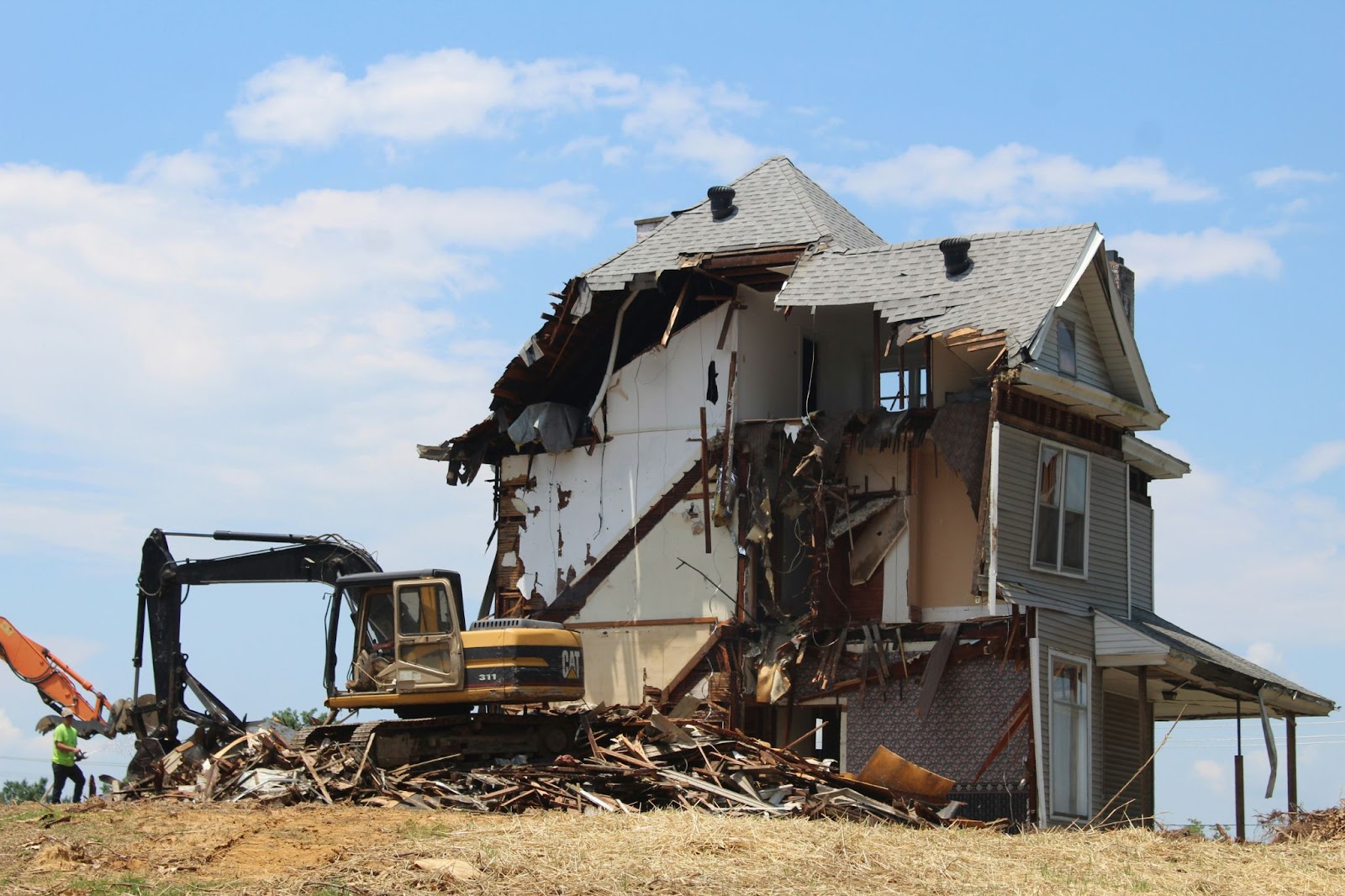Knockdown rebuilds are a popular choice for homeowners who wish to upgrade their living spaces without leaving their cherished neighbourhoods.
Homeowners may find they’ve outgrown their home, perhaps due to an expanding family and the need for more space, or simply a change in aesthetic preferences. Typically, knockdown rebuilds are a pathway to upsize, rather than downsize, a property.
The process involves demolishing the original house and constructing a new home in its place. Here's what you need to know before starting your knockdown rebuild journey
Understanding the Process
The knockdown rebuild process involves several stages:
-
Initial Consultation: Discuss your vision, budget, and expectations with a builder or architect.
-
Design Phase: Create a custom design, or choose a predesigned floor plan, for your new home based on your requirements.
-
Permits and Approvals: Obtain necessary permits from local authorities, including demolition and construction permits.
-
Demolition: The builders will safely demolish the existing structure, recycling or disposing of salvageable materials properly.
-
Construction: Builders will begin building your new home, following the approved design and specifications.
-
Final Inspection and Handover: Builders conduct a final inspection to ensure everything is up to standard before handing over the keys.

Budgeting and Financing
A well-planned budget is the cornerstone of a successful knockdown rebuild project.
Start by getting detailed quotes from builders and architects, which should cover all aspects of the project, including demolition, construction, permits, and landscaping.
It's also wise to allocate a contingency fund, typically around 10-15% of the total budget, to cover any unforeseen costs.
Choosing a volume builder can be a great way to ensure a quality build without breaking the bank. These companies build in scale - sometimes around 1000 homes a year - so they can afford to keep the costs for buyers low. While there are typically fewer customisation options available with volume builders, their top selling points include a wide range of floor plans and facades, along with low costs and fast build-times.
Construction loans are also a popular choice, as they release funds in stages, aligning with the progress of your build. These loans often have interest-only payment options during the construction phase, which can ease financial pressure.
Investigate current offers and promotions from homebuilders in your area, to see if there are any deals that suit what you’re looking for! This can be a great way to get the most out of your investment.
Ensure you understand the terms and conditions, including interest rates and repayment schedules. Consulting with a mortgage broker or financial advisor can help you navigate your options and secure the best financing solution for your needs.

Choosing the Right Builder
The success of your knockdown rebuild project largely depends on the builder you choose. Look for a builder with specific experience in Knockdown Rebuild projects, as they will understand the unique challenges and requirements. In many cases, a custom builder may be the best way to get the most out of your land, if you have a sloping block or corner lot perhaps.
Ask for a portfolio of their previous work and check their credentials, including licences and insurance.
Communication is key, so choose a builder who is responsive and transparent. They should be willing to keep you updated throughout the project and address any concerns promptly.
Additionally, consider their after-sales service and warranty policies, as these can provide peace of mind once the build is complete.
Design Considerations
The design of your new home should be a reflection of your lifestyle, preferences, and future needs. Work closely with your architect or designer to create a layout that optimises space, promotes natural light, and offers flexibility for future changes.
Consider incorporating sustainable features, such as solar panels or energy-efficient appliances, to reduce your environmental footprint and save on utility bills.
Don't forget about the aesthetics. The exterior design should complement the surrounding neighbourhood, while the interior should reflect your personal style. Choose materials and finishes that are durable, low maintenance, and align with your budget.

Legal and Regulatory Compliance
Navigating the legal and regulatory landscape is crucial for a smooth knockdown rebuild process. Ensure you have all the necessary permits before starting any work. This includes demolition permits, building permits, and approvals for any specific design features, such as heritage overlays or environmental considerations.
Adhere to local zoning laws and building codes, which dictate what you can build and where. Failure to comply can result in costly delays, fines, or even the need to modify or demolish your new home. Engage with a legal professional or a town planner to ensure you understand and meet all regulatory requirements.
Is Knockdown Rebuild Right for You?
When contemplating a knockdown rebuild project, it's crucial to consider several factors to determine if this approach aligns with your goals and circumstances. Here are some factors to consider to determine if a knockdown rebuild is applicable for you:

Condition of Your Current Home
Assess the condition of your existing home. If it's outdated, requires extensive repairs, or no longer meets your needs, a knockdown rebuild can be a cost-effective solution compared to renovating. It's particularly applicable if your home has structural issues or if the cost of renovation would exceed that of rebuilding.
Construction Timeline
Be prepared for the timeline of a knockdown rebuild project, which can be lengthy due to the various stages involved, from planning and design to demolition and construction. If you need to move into a new home quickly, a knockdown rebuild project may not be the most suitable option.
Budget Considerations
Evaluate your budget to determine if a knockdown rebuild is financially feasible. Knockdown rebuild projects can be a significant investment, so it's crucial to have a clear understanding of the costs involved, including demolition, construction, and potential unforeseen expenses. If you have the financial means and see the value in investing in a brand-new home in your existing location, it could be suitable for you.
Long-Term Plans
Consider your long-term plans. If you intend to stay in your home for many years, a knockdown rebuild can provide a long-lasting solution that adapts to your evolving needs. It's suitable for those looking for a future-proof home that can accommodate changes in family dynamics, accessibility needs, or lifestyle preferences.

Alternative Options
Explore alternative options, such as renovating your existing home or purchasing a new home in a different location. Weigh the pros and cons of each option in relation to your specific needs, budget, and preferences. A knockdown rebuild project may be the best choice if the alternatives do not offer the same level of customisation or potential for creating your ideal living space.
Simplify Your Knockdown Rebuild with Homeshelf
A knockdown rebuild project lets you create your ideal home in a location where you already feel grounded.
Key steps include understanding the process, budgeting, choosing the right builder, focusing on design, and following legal requirements. With the right planning and team, you can turn your living space into a modern, efficient, and personalised home.
Homeshelf makes it easier to find the perfect builder and home design for your project. With a wide range of builders and over 1,000 house designs, Homeshelf lists knockdown rebuild builders. Start your dream home journey with Homeshelf today by visiting Homeshelf.
Publisher Website: www.homeshelf.com.au